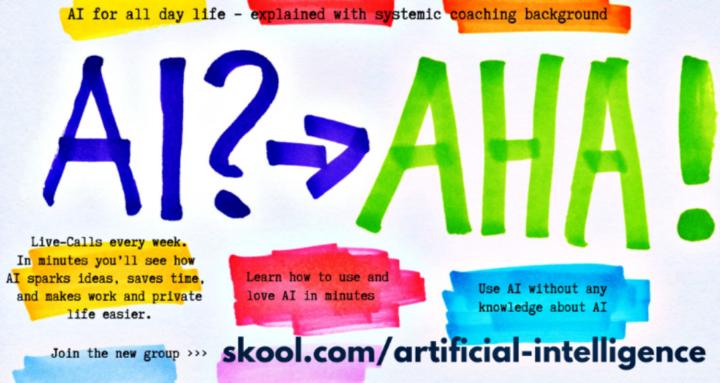Measuring Human AI Team Performance
Measuring Human AI Team Performance:
Performance evaluation of human-AI teams requires metrics that capture both individual component performance and emergent team dynamics. The engineering challenge is developing measurement frameworks that assess efficiency, accuracy, and collaboration quality while identifying optimization opportunities, detecting degradation, and demonstrating value beyond either human or AI alone.
Explained for People without AI-Background
- Measuring human-AI teams is like evaluating a doubles' tennis team - you track not just each player's statistics but how well they coordinate, cover each other's weaknesses, and achieve results neither could accomplish alone, adjusting strategies based on what the metrics reveal.
Performance Measurement Foundations
- Baseline establishment comparing human-only, AI-only, and combined performance; demonstrating synergy value.
- Multi-dimensional metrics beyond simple accuracy; speed, cost, consistency, and scalability factors.
- Longitudinal tracking showing improvement over time; learning curves for human-AI collaboration.
Efficiency Metrics for Hybrid Teams
- Throughput, measuring items processed per hour; balancing speed with quality requirements.
- Automation rate, showing percentage handled by AI alone; identifying opportunities for increased automation.
- Human utilization tracking reviewer productivity; optimal workload without burnout.
Accuracy Assessment in Collaborative Systems
- Error rates stratified by difficulty; understanding performance across task complexity.
- False positive and false negative analysis; different costs for different error types.
- Precision-recall tradeoffs; optimizing for specific business objectives.
Measuring Collaboration Effectiveness
- Handoff efficiency between human and AI; measuring transition smoothness.
- Complementarity metrics showing unique contributions; what each party brings to the team.
- Conflict resolution rates when human overrides AI; understanding disagreement patterns.
Cost-Benefit Analysis of Human Involvement
- Total cost of ownership, including human labor; comprehensive economic evaluation.
- Return on investment from quality improvements; monetizing error reduction.
- Opportunity cost of human time; value of redirecting effort to higher-level tasks.
Learning and Adaptation Metrics
- Model improvement rate from human feedback; measuring AI learning speed.
- Human skill development over time; increasing expertise through AI collaboration.
- System evolution tracking capability expansion; new tasks handled over time.
Reliability and Consistency Measurement
- Consistency across time periods; stability of combined performance.
- Robustness to personnel changes; system resilience to reviewer turnover.
- Degradation detection, identifying performance drops; early warning systems.
Cognitive Load and Workload Assessment
- Task completion time distributions; identifying when humans struggle.
- Error patterns indicating confusion; interface or instruction problems.
- Subjective workload assessments; NASA-TLX or similar scales.
Satisfaction and Trust Metrics
- Reviewer satisfaction surveys; job satisfaction in human-AI roles.
- User satisfaction with outcomes; end-user perception of quality.
- Stakeholder confidence in system; trust metrics from decision consumers.
Comparative and Benchmark Analysis
- Benchmarking against industry standards; competitive performance assessment.
- A/B testing of workflow variations; optimizing processes through experimentation.
- Cross-team comparisons, identifying best practices; learning from high performers.
Predictive Analytics for Team Performance
- Performance forecasting under different loads; capacity planning models.
- Quality prediction based on leading indicators; preventing problems before they occur.
- Optimization recommendations from pattern analysis; data-driven improvements.
Common Performance Measurement Pitfalls
- Over-indexing on single metrics; missing system-level performance issues.
- Short-term optimization harming long-term performance; unsustainable pace causing burnout.
- Ignoring qualitative feedback, focusing only on numbers; missing important context.
Related Concepts You'll Learn Next in this Artificial Intelligence Skool-Community
- Human-AI Collaboration Patterns
- Performance Optimization in Hybrid Systems
- Metrics and KPIs for AI Systems
Internal Reference
See also Governance, Audit, and Compliance in HITL Systems.
1
0 comments

skool.com/artificial-intelligence
Artificial Intelligence (AI): Machine Learning, Deep Learning, Natural Language Processing NLP, Computer Vision, ANI, AGI, ASI, Human in the loop, SEO
Powered by



